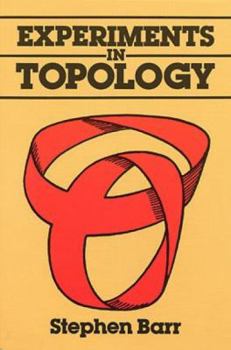Experiments in Topology
Select Format
Select Condition 
Book Overview
Classic, lively explanation of one of the byways of mathematics. Klein bottles, Moebius strips, projective planes, map coloring, problem of the Koenigsberg bridges, much more, described with clarity and wit.
Format:Paperback
Language:English
ISBN:0486259331
ISBN13:9780486259338
Release Date:March 1989
Publisher:Dover Publications
Length:238 Pages
Weight:0.54 lbs.
Dimensions:0.5" x 5.4" x 7.9"














